Events
| Name | organizer | Where |
|---|---|---|
| MBCC “Doing Business with Mongolia seminar and Christmas Receptiom” Dec 10. 2025 London UK | MBCCI | London UK Goodman LLC |
NEWS
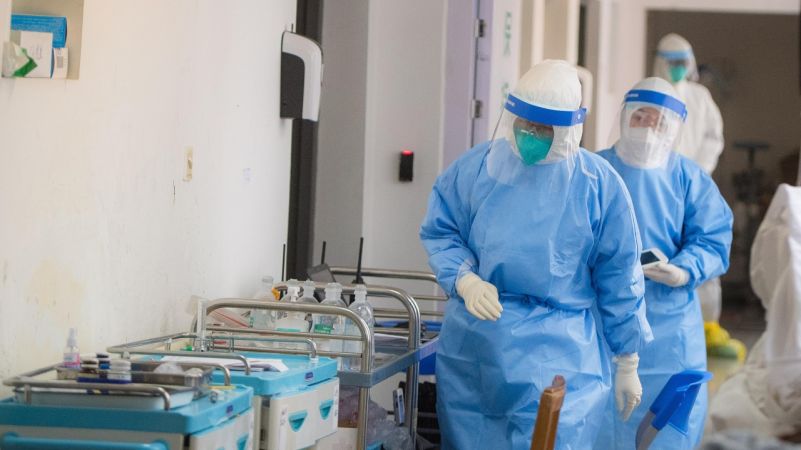
COVID-19: 2,565 new cases, 17 deaths reported www.montsame.mn
The Ministry of Health reported that 2,565 new cases of COVID-19 have been reported in the past 24 hours. Specifically, 1,322 cases were confirmed in Ulaanbaatar city, with 1243 cases in rural regions.
As of today, the total number of confirmed COVID-19 cases in Mongolia stands at 330,869. 8,236 patients have made recoveries in the past 24 hours.
Furthermore, 17 new COVID-19 related deaths have been reported, raising the country’s death toll to 1,409. Currently, 19,433 people are receiving hospital treatment for COVID-19 whilst 60,425 people with mild symptoms of COVID-19 are being isolated at home.
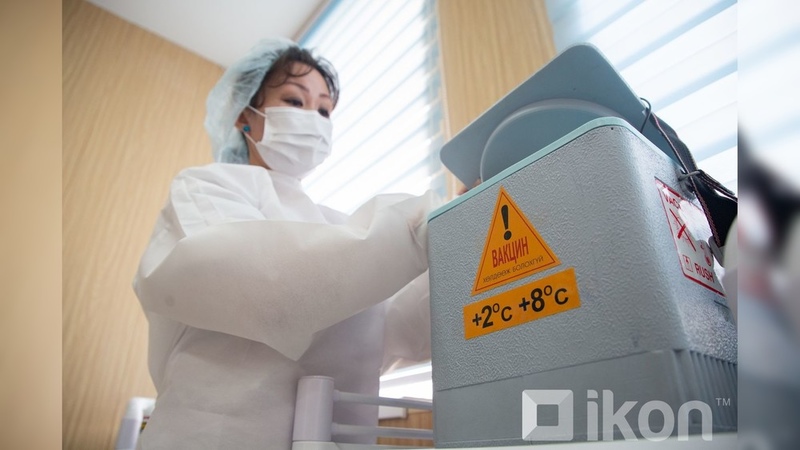
2 percent of Mongolians who got 3rd shot later infected with Covid-19 www.news.mn
A total of 7294 have been diagnosed with COVID-19 despite having been inoculated with a third COVID-19 vaccine dose, according to Ts.Bilegtsaikhan, director of National Center of Communicative Disease. As for people who get two doses of vaccine, infection rate was seven percent or 1500 people.
Some 332,000 Mongolians have been administered a third booster shot so far, in a drive that began later August.
An additional 2565 people were diagnosed with the virus, bringing the total number of cases in Mongolia since the start of the pandemic to 330,869.
Mongolia’s virus death toll is now at 1,482 with 17 fatalities recorded today (13 October).
The NCCD director said that out of Mongolia’s population of over 3.2 million, 2.1 million have gotten two doses of vaccine and over 322,000 have been administered a third booster shot.

World’s top copper projects by capex — report www.mining.com
Global copper mine production is set to expand by 7.8% y-o-y in 2021 as a result of multiple new projects coming online and low-base effects due to covid-19 lockdowns reducing output in 2020, market analyst Fitch Solutions finds in its latest industry report.
Output over the next few years is slated to be strong, as a number of new projects and expansions come online, supported by rising copper prices and demand.
SIGN UP FOR THE COPPER DIGEST
Fitch forecasts global copper mine production to increase by an average annual rate of 3.8% over 2021-2030, with annual output rising from 20.2mnt in 2020 to 29.4mnt by the end of the decade.
Chile is the world’s top copper producer, and leading project development are mainly large-scale miners BHP and Teck Resources, which have been attracted to the country’s well-developed infrastructure, extensive reserves and history of stability.
Chile has attracted a substantial amount of mining investment in recent years, which will begin to pay off over the coming years as new projects are slated to come online, and the analyst’s 2021 growth forecast is primarily underpinned by the start-up of BHP’s Spence Growth Option project. First production was achieved in December 2020 and is projected to increase payable copper production by 185kt per annum once ramped up — the process is expected to take 12 months.
In the longer term, a decline in average ore grades across the sector in Chile presents a key downside risk to production forecasts, Fitch notes, as ore grades decline, and higher amounts of ore need to be processed in order to yield an equivalent amount of copper each year.
Copper is in high demand for use in renewable energy and electric vehicles, but new deposits are rare and increasingly difficult to recover.
While Chile is the world’s biggest copper producer, Fitch expects Australia and Canada to dominate new projects. The analyst has ranked the world’s top ten copper projects by capex, with Chile absent from the list.
Source: Fitch Solutions
In first place is Seabridge Gold’s KSM project in British Columbia, Canada with a capex allocation of $12.1 million. In November 2020, Seabridge refiled the technical report: Proved Reserves: 460mnt; Mine Life: 44 years. The project includes Kerr, Sulphurets, Mitchell and Iron Cap deposits.
Rio Tinto-controlled Turquoise Hill Resources’ massive Oyu Tolgoi expansion in Mongolia takes second place, with an $11.9 million capex. The project has been plagued with delays and cost overruns, but Turquoise Hill is expected to commence production at the project in October 2022. The $5.3bn underground development at the mine remains on schedule to be completed by 2022; Rio Tinto has 50.8% interest in Turquoise Hill Resources. Proved Reserves: 355mnt; Mine Life: 31years.
SolGold and Cornerstone Resources’ jointly held Cascabel project in Ecuador is in 3rd place with a capex allocation of just over $10 million. Measured Resources: 1192mnt; Mine Life: 66years; The project includes Alpala deposit; Expected Production: 150kt/yr Proved Reserves: 604mnt; Mine Life: 33years; Expected Production: 175kt/yr.
Coming in at number 4 is the Freida River project in Papua New Guinea with a $7.8 million allocated capex. Proved Reserves: 569mnt; Mine Life: 20years.
MMG’s Izok Corridor project in Canada’s Nunavut’s Bathurst Inlet is in 5th place with a $6.5 million allocated capex. Indicated Resources: 21.4mnt; The project includes Izok Lake and High Lake deposits.
Teck’s Galore Creek project in British Columbia, Canada in 6th place with a $6.1 million capex allocation. In October 2018 Novagold Resources sold 50% stake in the project to Newmont Corporation. Measured Resources (Newmont Corporation’s 50% stake): 128.4mnt; Mine Life: 18.5years; Expected Production: 146.1kt/ yr.
Alcantara Group’s Tampakan project in the Philippines holds seventh place with a $5.9 million capex. However, in August 2020 the Philippine government has cancelled an agreement with Alcantara Group to develop the mine. Estimated Production: 375kt/yr; Resources: 2940mnt; Mine Life: 17years.
Kaz Minerals’ Baimskya project in Russia has a $5.5 million capex allocation. KAZ is expected to complete bankable feasibility study for the project in H121; Mine Life: 25years; Measured Resources: 139mnt; Expected Start Year: 2027; Expected Production: 250kt/yr.
Rounding out Fitch’s list is Antofagasta’s Twin Metals project in Minnesota. Antofagasta has submitted a plan to state and federal authorities for the project; Measured Resources: 291.4mnt; Mine Life: 25 years; The project includes Maturi, Birch Lake, Maturi Southwest and Spruce Road deposits.
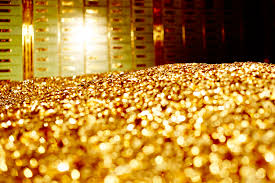
BoM purchases 2 tons of precious metal in September www.montsame.mn
In September, the Bank of Mongolia (BoM) purchased 2 tons of precious metal. Thus, total amount of precious metal purchase has reached 15.0 tons since the beginning of this year, showing a decrease of 2.2 tons compared to the same period of previous year.
The BoM branches in Darkhan-Uul and Bayankhongor aimag bought 97.8 kg and 156 kg of precious metals respectively.
The average price of BoM’s purchase of 1 gram of gold was MNT 162,906.07 last month.

Repo financing of MNT 160 billion disbursed to commercial banks www.montsame.mn
According to the Monetary Policy Committee's decision to provide long-term repo financing in the fourth quarter of this year, a total of MNT 160 billion was disbursed by the Bank of Mongolia to four commercial banks.
With the financing, the banks will issue loans of up to MNT 3 billion with a term of two years and an interest rate of 10.5 percent per annum to small and medium enterprises, individuals and non-mining exporters in accordance with the criteria approved by the Governor of the Bank of Mongolia on February 19.

‘Selbe’ heating plant put into operation www.montsame.mn
On October 8, the ‘Selbe’ heating plant has been put into operation in the framework of Tranche 1 for the Ulaanbaatar Urban Services and Ger Areas Development Investment Program being implemented with financing from the Asian Development Bank and the European Investment Bank.
With a capacity of 28 MW, the plant has a capacity to supply residents living in a total area of 158 hectares in the capital city’s Sukhbaatar and Chingeltei districts. In the framework of the tranche, the Bayankhoshuu subcenter is also being connected to the central heating system.
“Equipped with modern, environmentally friendly technology, the Selbe heating plant meets the safety requirements for public and environmental health,” highlighted Deputy Governor of the Capital City J.Sandagsuren.
While the heating plant’s blueprint was done by the Institute of Thermal Engineering and Industrial Ecology at the Mongolian University of Science and Technology, the construction was carried out by ‘Khurd’ JSC as the general contractor under the monitoring of the Capital City Investment Department.
Currently, there are 3,260 households and 117 entities at the Selbe subcenter. The heating plant is expected to supply heat to some 7,000 households and over 300 entities in the future.

Mongolia logs 1,566 new COVID-19 cases, 15 more deaths www.xinhuanet.com
Oct. 12 (Xinhua) -- Mongolia recorded 1,566 new locally transmitted COVID-19 cases in the last 24 hours, bringing the national tally to 328,304, the country's health ministry reported on Tuesday.
Meanwhile, 15 more patients aged over 20 died in the past day, bringing the nationwide death toll to 1,392.
The resurgence of COVID-19 has continued due to the Delta wave, and more than 1,000 infections and 10 or more deaths have been reported daily in the country with a population of around 3.4 million.
The Asian country launched a national vaccination campaign in late February, with the aim of covering at least 60 percent of its population. So far, 65.6 percent of the population has received two doses of the COVID-19 vaccines.
The country's health authorities have urged the public to strictly follow health guidelines and receive a booster or a third vaccine dose to boost their immune systems.

China coal futures surge to record as flooding swamps mining hub www.bloomberg.com
Chinese thermal coal futures jumped to a new intraday record as heavy rains and flooding shuttered more mines in the country’s biggest coal producing region.
Floods have closed 60 of the 682 coal mines in Shanxi province, which has produced 30% of China’s supply of the fuel this year, adding to a worsening energy crunch that’s a threat to the nation’s economy.
Coal futures on the Zhengzhou Commodity Exchange rose as much as 11.6% Monday to 1,408.20 yuan ($218.54) a ton, a new intraday record for the most-active contract.
(By Dan Murtaugh)
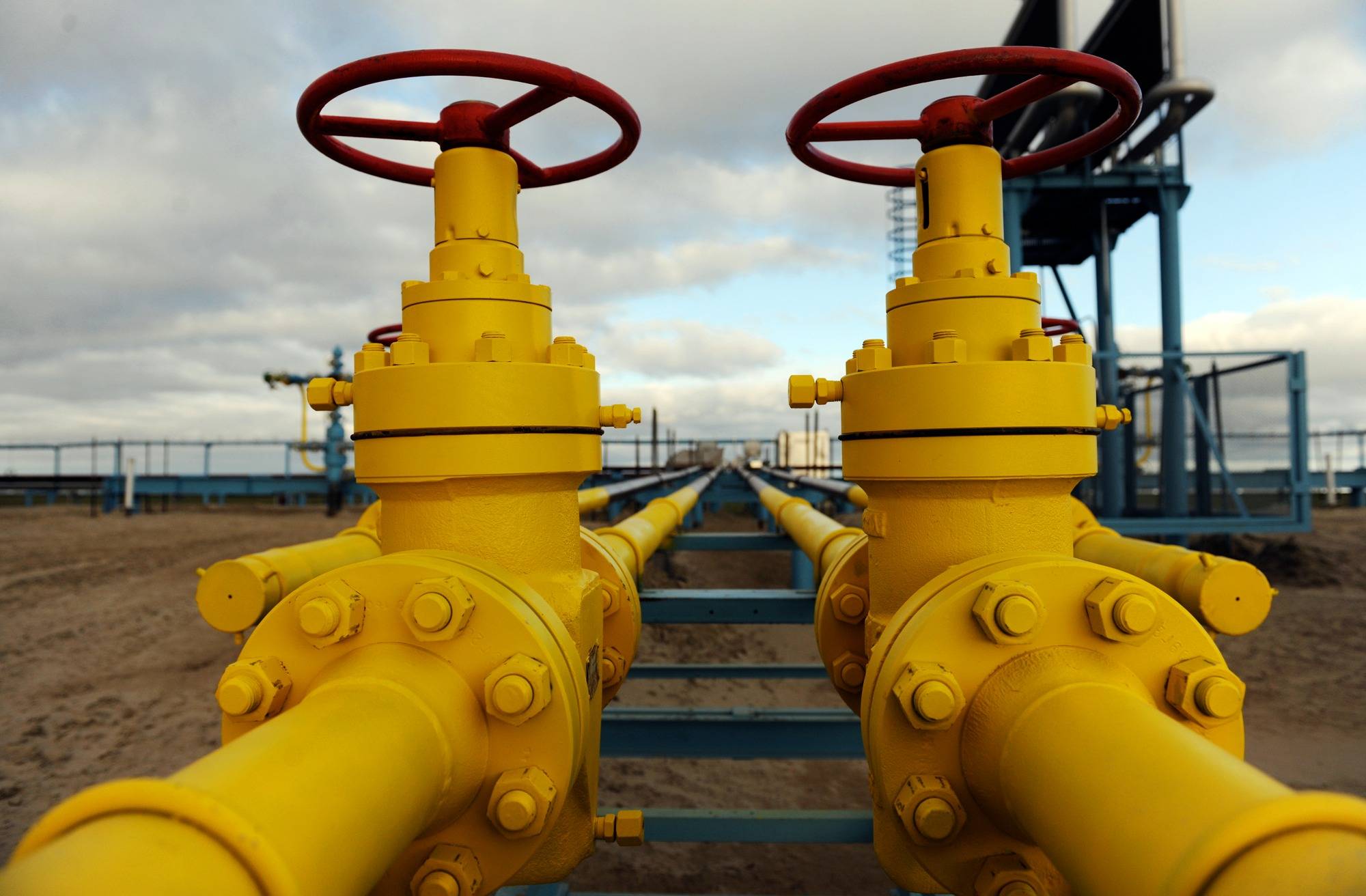
Mongolian natural gas could help power China www.mongoliaweekly.org
China's energy blackouts have put the country's coal-heavy national electricity grid back into the spotlight as the country plans to pivot away from coal as part of its emission reduction commitment.
The shortage shows the difficulty China faces in ensuring energy security for its enormous population and also reveals Beijing's dependence on seaborne coal and liquefied natural gas (LNG), which China's leaders are keen to remedy.
One solution could be lying just across the Mongolian border. Elixir Energy, an Australian-listed gas exploration and development company, believes there could be a giant reserve of natural gas (in the form of coal-bed methane) underneath the South Gobi and is now one of several Australian companies looking in the area.
"We're solely focused on Mongolia," Elixir Energy’s CEO Neil Young said to Mongolia Weekly. "We began exploring in 2019 and made the first discovery of gas in Mongolia in early 2020, just as the pandemic was breaking, and have been successful in raising capital to do more exploration and appraisal work with a view to establishing a large resource on the border of the world's largest energy-importing nation – China."
Young first went to Mongolia in 2011 and has experience with coal-seam gas projects in Queensland, Australia that now supply east Asia, including China.
"My insight was that if you can take gas from Queensland coal seams, liquefy it, ship it to China and make money, hopefully, you can do the same in Mongolia without the high costs of the shipping and liquefaction process," he explains. "However it took years of working with the Mongolian government before we obtained the first contract. Now there are two other ASX listed companies looking at similar projects."
It might seem strange that a huge reserve of untapped natural gas could still be found so close to the world's largest energy market – but Mongolia's historical alignment with the Soviet Union, difficult local geology, and low demand from China in the late 20th century in effect prevented exploration and development.
"The USSR had almost endless oil and gas supplies of its own," Young says. "Mongolia was a tiny economy that didn't need its own gas, and in 1990 China was still exporting energy rather than importing it. That's obviously changed substantially."
Mongolia's petroleum law was updated in 2014 to create new fiscal regulations for resources like coal-bed methane, which after a delay has begun to see the beginnings of a rush for Mongolian gas.
"It's become easier for regulators to deal with further licenses of similar types," Young says. "It's always harder to be the first."
The attraction is clearly the potential competitiveness of Mongolian gas in the Chinese market given the proximity to major east coast Chinese cities and the country’s gas transmission infrastructure. As a gas explorer, Elixir Energy's strategy is to map and develop the South Gobi project (called Nomgon IX) to the point that a major energy company would step in with the huge capital resources necessary to construct pipelines into China.
"Location is important for gas compared to other commodities," Young says. "Gas costs a lot to move. In long-term pricing, gas coming by ship into east Asia will be far more expensive than piping gas from Mongolia. You'd make better margins.
"So our job is to spend five to ten years exploring and appraising the resource, but it's optimal for the resources industry for a larger and different party to develop the asset beyond that point."
Young is optimistic that a project like Nomgon will attract enough investment to see Mongolia export its own gas to China. This in turn could even subsidize a greater role for gas in Mongolia's own national electricity grid.
"An export project like that can easily attract enough capital," he says. "If I was the Mongolian government, I'd see that as the best way to get domestic demand subsidized."
By:Ewen Levick
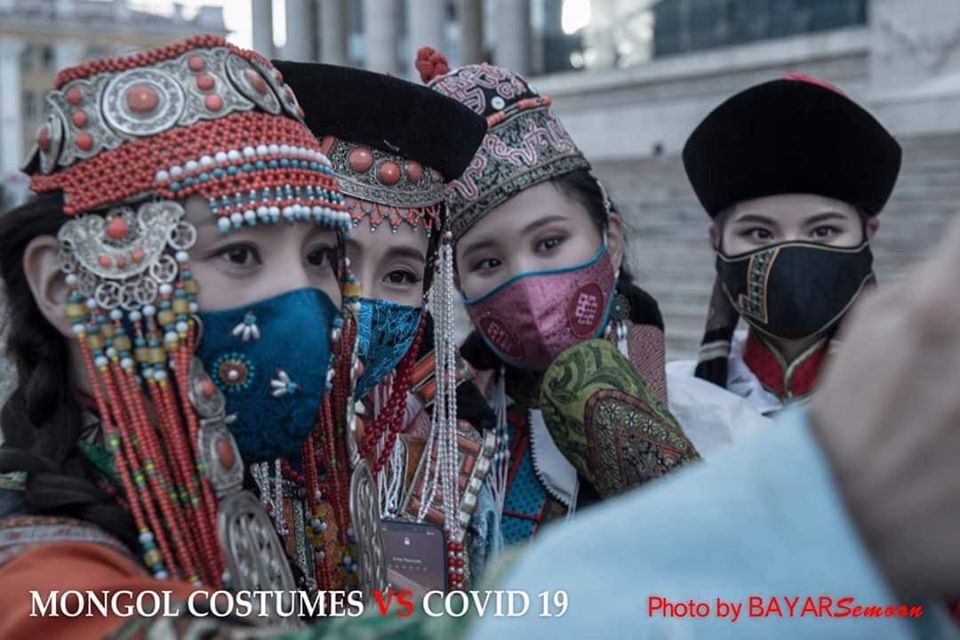
Protest organized in Mongolia for better protection of girls www.xinhuanet.com
Oct. 11 (Xinhua) -- A silent protest of "stuffed bunnies" to demand better protection of girls from sexual violence was organized in Mongolia on Monday on the occasion of the International Day of the Girl Child.
Sexual violence against girls has sharply increased in Mongolia in recent years, Batnasan Oyungerel, head of the Mongolian Women's Federation, which organized the protest, told Xinhua.
In 2017, about 130 girls were sexually abused in the country, with the number rising to 330 in 2020, Oyungerel said, adding that the number only includes cases recorded by police.
During the silent protest, the women's federation deployed a total of 330 stuffed bunnies at the central square in Ulan Bator, representing the 330 girls who were sexually abused last year, Oyungerel said.
In 2012, the United Nations designated Oct. 11 as the International Day of the Girl Child to recognize girls' rights and the unique challenges girls face around the world.
- «
- 1
- 2
- 3
- 4
- 5
- 6
- 7
- 8
- 9
- 10
- 11
- 12
- 13
- 14
- 15
- 16
- 17
- 18
- 19
- 20
- 21
- 22
- 23
- 24
- 25
- 26
- 27
- 28
- 29
- 30
- 31
- 32
- 33
- 34
- 35
- 36
- 37
- 38
- 39
- 40
- 41
- 42
- 43
- 44
- 45
- 46
- 47
- 48
- 49
- 50
- 51
- 52
- 53
- 54
- 55
- 56
- 57
- 58
- 59
- 60
- 61
- 62
- 63
- 64
- 65
- 66
- 67
- 68
- 69
- 70
- 71
- 72
- 73
- 74
- 75
- 76
- 77
- 78
- 79
- 80
- 81
- 82
- 83
- 84
- 85
- 86
- 87
- 88
- 89
- 90
- 91
- 92
- 93
- 94
- 95
- 96
- 97
- 98
- 99
- 100
- 101
- 102
- 103
- 104
- 105
- 106
- 107
- 108
- 109
- 110
- 111
- 112
- 113
- 114
- 115
- 116
- 117
- 118
- 119
- 120
- 121
- 122
- 123
- 124
- 125
- 126
- 127
- 128
- 129
- 130
- 131
- 132
- 133
- 134
- 135
- 136
- 137
- 138
- 139
- 140
- 141
- 142
- 143
- 144
- 145
- 146
- 147
- 148
- 149
- 150
- 151
- 152
- 153
- 154
- 155
- 156
- 157
- 158
- 159
- 160
- 161
- 162
- 163
- 164
- 165
- 166
- 167
- 168
- 169
- 170
- 171
- 172
- 173
- 174
- 175
- 176
- 177
- 178
- 179
- 180
- 181
- 182
- 183
- 184
- 185
- 186
- 187
- 188
- 189
- 190
- 191
- 192
- 193
- 194
- 195
- 196
- 197
- 198
- 199
- 200
- 201
- 202
- 203
- 204
- 205
- 206
- 207
- 208
- 209
- 210
- 211
- 212
- 213
- 214
- 215
- 216
- 217
- 218
- 219
- 220
- 221
- 222
- 223
- 224
- 225
- 226
- 227
- 228
- 229
- 230
- 231
- 232
- 233
- 234
- 235
- 236
- 237
- 238
- 239
- 240
- 241
- 242
- 243
- 244
- 245
- 246
- 247
- 248
- 249
- 250
- 251
- 252
- 253
- 254
- 255
- 256
- 257
- 258
- 259
- 260
- 261
- 262
- 263
- 264
- 265
- 266
- 267
- 268
- 269
- 270
- 271
- 272
- 273
- 274
- 275
- 276
- 277
- 278
- 279
- 280
- 281
- 282
- 283
- 284
- 285
- 286
- 287
- 288
- 289
- 290
- 291
- 292
- 293
- 294
- 295
- 296
- 297
- 298
- 299
- 300
- 301
- 302
- 303
- 304
- 305
- 306
- 307
- 308
- 309
- 310
- 311
- 312
- 313
- 314
- 315
- 316
- 317
- 318
- 319
- 320
- 321
- 322
- 323
- 324
- 325
- 326
- 327
- 328
- 329
- 330
- 331
- 332
- 333
- 334
- 335
- 336
- 337
- 338
- 339
- 340
- 341
- 342
- 343
- 344
- 345
- 346
- 347
- 348
- 349
- 350
- 351
- 352
- 353
- 354
- 355
- 356
- 357
- 358
- 359
- 360
- 361
- 362
- 363
- 364
- 365
- 366
- 367
- 368
- 369
- 370
- 371
- 372
- 373
- 374
- 375
- 376
- 377
- 378
- 379
- 380
- 381
- 382
- 383
- 384
- 385
- 386
- 387
- 388
- 389
- 390
- 391
- 392
- 393
- 394
- 395
- 396
- 397
- 398
- 399
- 400
- 401
- 402
- 403
- 404
- 405
- 406
- 407
- 408
- 409
- 410
- 411
- 412
- 413
- 414
- 415
- 416
- 417
- 418
- 419
- 420
- 421
- 422
- 423
- 424
- 425
- 426
- 427
- 428
- 429
- 430
- 431
- 432
- 433
- 434
- 435
- 436
- 437
- 438
- 439
- 440
- 441
- 442
- 443
- 444
- 445
- 446
- 447
- 448
- 449
- 450
- 451
- 452
- 453
- 454
- 455
- 456
- 457
- 458
- 459
- 460
- 461
- 462
- 463
- 464
- 465
- 466
- 467
- 468
- 469
- 470
- 471
- 472
- 473
- 474
- 475
- 476
- 477
- 478
- 479
- 480
- 481
- 482
- 483
- 484
- 485
- 486
- 487
- 488
- 489
- 490
- 491
- 492
- 493
- 494
- 495
- 496
- 497
- 498
- 499
- 500
- 501
- 502
- 503
- 504
- 505
- 506
- 507
- 508
- 509
- 510
- 511
- 512
- 513
- 514
- 515
- 516
- 517
- 518
- 519
- 520
- 521
- 522
- 523
- 524
- 525
- 526
- 527
- 528
- 529
- 530
- 531
- 532
- 533
- 534
- 535
- 536
- 537
- 538
- 539
- 540
- 541
- 542
- 543
- 544
- 545
- 546
- 547
- 548
- 549
- 550
- 551
- 552
- 553
- 554
- 555
- 556
- 557
- 558
- 559
- 560
- 561
- 562
- 563
- 564
- 565
- 566
- 567
- 568
- 569
- 570
- 571
- 572
- 573
- 574
- 575
- 576
- 577
- 578
- 579
- 580
- 581
- 582
- 583
- 584
- 585
- 586
- 587
- 588
- 589
- 590
- 591
- 592
- 593
- 594
- 595
- 596
- 597
- 598
- 599
- 600
- 601
- 602
- 603
- 604
- 605
- 606
- 607
- 608
- 609
- 610
- 611
- 612
- 613
- 614
- 615
- 616
- 617
- 618
- 619
- 620
- 621
- 622
- 623
- 624
- 625
- 626
- 627
- 628
- 629
- 630
- 631
- 632
- 633
- 634
- 635
- 636
- 637
- 638
- 639
- 640
- 641
- 642
- 643
- 644
- 645
- 646
- 647
- 648
- 649
- 650
- 651
- 652
- 653
- 654
- 655
- 656
- 657
- 658
- 659
- 660
- 661
- 662
- 663
- 664
- 665
- 666
- 667
- 668
- 669
- 670
- 671
- 672
- 673
- 674
- 675
- 676
- 677
- 678
- 679
- 680
- 681
- 682
- 683
- 684
- 685
- 686
- 687
- 688
- 689
- 690
- 691
- 692
- 693
- 694
- 695
- 696
- 697
- 698
- 699
- 700
- 701
- 702
- 703
- 704
- 705
- 706
- 707
- 708
- 709
- 710
- 711
- 712
- 713
- 714
- 715
- 716
- 717
- 718
- 719
- 720
- 721
- 722
- 723
- 724
- 725
- 726
- 727
- 728
- 729
- 730
- 731
- 732
- 733
- 734
- 735
- 736
- 737
- 738
- 739
- 740
- 741
- 742
- 743
- 744
- 745
- 746
- 747
- 748
- 749
- 750
- 751
- 752
- 753
- 754
- 755
- 756
- 757
- 758
- 759
- 760
- 761
- 762
- 763
- 764
- 765
- 766
- 767
- 768
- 769
- 770
- 771
- 772
- 773
- 774
- 775
- 776
- 777
- 778
- 779
- 780
- 781
- 782
- 783
- 784
- 785
- 786
- 787
- 788
- 789
- 790
- 791
- 792
- 793
- 794
- 795
- 796
- 797
- 798
- 799
- 800
- 801
- 802
- 803
- 804
- 805
- 806
- 807
- 808
- 809
- 810
- 811
- 812
- 813
- 814
- 815
- 816
- 817
- 818
- 819
- 820
- 821
- 822
- 823
- 824
- 825
- 826
- 827
- 828
- 829
- 830
- 831
- 832
- 833
- 834
- 835
- 836
- 837
- 838
- 839
- 840
- 841
- 842
- 843
- 844
- 845
- 846
- 847
- 848
- 849
- 850
- 851
- 852
- 853
- 854
- 855
- 856
- 857
- 858
- 859
- 860
- 861
- 862
- 863
- 864
- 865
- 866
- 867
- 868
- 869
- 870
- 871
- 872
- 873
- 874
- 875
- 876
- 877
- 878
- 879
- 880
- 881
- 882
- 883
- 884
- 885
- 886
- 887
- 888
- 889
- 890
- 891
- 892
- 893
- 894
- 895
- 896
- 897
- 898
- 899
- 900
- 901
- 902
- 903
- 904
- 905
- 906
- 907
- 908
- 909
- 910
- 911
- 912
- 913
- 914
- 915
- 916
- 917
- 918
- 919
- 920
- 921
- 922
- 923
- 924
- 925
- 926
- 927
- 928
- 929
- 930
- 931
- 932
- 933
- 934
- 935
- 936
- 937
- 938
- 939
- 940
- 941
- 942
- 943
- 944
- 945
- 946
- 947
- 948
- 949
- 950
- 951
- 952
- 953
- 954
- 955
- 956
- 957
- 958
- 959
- 960
- 961
- 962
- 963
- 964
- 965
- 966
- 967
- 968
- 969
- 970
- 971
- 972
- 973
- 974
- 975
- 976
- 977
- 978
- 979
- 980
- 981
- 982
- 983
- 984
- 985
- 986
- 987
- 988
- 989
- 990
- 991
- 992
- 993
- 994
- 995
- 996
- 997
- 998
- 999
- 1000
- 1001
- 1002
- 1003
- 1004
- 1005
- 1006
- 1007
- 1008
- 1009
- 1010
- 1011
- 1012
- 1013
- 1014
- 1015
- 1016
- 1017
- 1018
- 1019
- 1020
- 1021
- 1022
- 1023
- 1024
- 1025
- 1026
- 1027
- 1028
- 1029
- 1030
- 1031
- 1032
- 1033
- 1034
- 1035
- 1036
- 1037
- 1038
- 1039
- 1040
- 1041
- 1042
- 1043
- 1044
- 1045
- 1046
- 1047
- 1048
- 1049
- 1050
- 1051
- 1052
- 1053
- 1054
- 1055
- 1056
- 1057
- 1058
- 1059
- 1060
- 1061
- 1062
- 1063
- 1064
- 1065
- 1066
- 1067
- 1068
- 1069
- 1070
- 1071
- 1072
- 1073
- 1074
- 1075
- 1076
- 1077
- 1078
- 1079
- 1080
- 1081
- 1082
- 1083
- 1084
- 1085
- 1086
- 1087
- 1088
- 1089
- 1090
- 1091
- 1092
- 1093
- 1094
- 1095
- 1096
- 1097
- 1098
- 1099
- 1100
- 1101
- 1102
- 1103
- 1104
- 1105
- 1106
- 1107
- 1108
- 1109
- 1110
- 1111
- 1112
- 1113
- 1114
- 1115
- 1116
- 1117
- 1118
- 1119
- 1120
- 1121
- 1122
- 1123
- 1124
- 1125
- 1126
- 1127
- 1128
- 1129
- 1130
- 1131
- 1132
- 1133
- 1134
- 1135
- 1136
- 1137
- 1138
- 1139
- 1140
- 1141
- 1142
- 1143
- 1144
- 1145
- 1146
- 1147
- 1148
- 1149
- 1150
- 1151
- 1152
- 1153
- 1154
- 1155
- 1156
- 1157
- 1158
- 1159
- 1160
- 1161
- 1162
- 1163
- 1164
- 1165
- 1166
- 1167
- 1168
- 1169
- 1170
- 1171
- 1172
- 1173
- 1174
- 1175
- 1176
- 1177
- 1178
- 1179
- 1180
- 1181
- 1182
- 1183
- 1184
- 1185
- 1186
- 1187
- 1188
- 1189
- 1190
- 1191
- 1192
- 1193
- 1194
- 1195
- 1196
- 1197
- 1198
- 1199
- 1200
- 1201
- 1202
- 1203
- 1204
- 1205
- 1206
- 1207
- 1208
- 1209
- 1210
- 1211
- 1212
- 1213
- 1214
- 1215
- 1216
- 1217
- 1218
- 1219
- 1220
- 1221
- 1222
- 1223
- 1224
- 1225
- 1226
- 1227
- 1228
- 1229
- 1230
- 1231
- 1232
- 1233
- 1234
- 1235
- 1236
- 1237
- 1238
- 1239
- 1240
- 1241
- 1242
- 1243
- 1244
- 1245
- 1246
- 1247
- 1248
- 1249
- 1250
- 1251
- 1252
- 1253
- 1254
- 1255
- 1256
- 1257
- 1258
- 1259
- 1260
- 1261
- 1262
- 1263
- 1264
- 1265
- 1266
- 1267
- 1268
- 1269
- 1270
- 1271
- 1272
- 1273
- 1274
- 1275
- 1276
- 1277
- 1278
- 1279
- 1280
- 1281
- 1282
- 1283
- 1284
- 1285
- 1286
- 1287
- 1288
- 1289
- 1290
- 1291
- 1292
- 1293
- 1294
- 1295
- 1296
- 1297
- 1298
- 1299
- 1300
- 1301
- 1302
- 1303
- 1304
- 1305
- 1306
- 1307
- 1308
- 1309
- 1310
- 1311
- 1312
- 1313
- 1314
- 1315
- 1316
- 1317
- 1318
- 1319
- 1320
- 1321
- 1322
- 1323
- 1324
- 1325
- 1326
- 1327
- 1328
- 1329
- 1330
- 1331
- 1332
- 1333
- 1334
- 1335
- 1336
- 1337
- 1338
- 1339
- 1340
- 1341
- 1342
- 1343
- 1344
- 1345
- 1346
- 1347
- 1348
- 1349
- 1350
- 1351
- 1352
- 1353
- 1354
- 1355
- 1356
- 1357
- 1358
- 1359
- 1360
- 1361
- 1362
- 1363
- 1364
- 1365
- 1366
- 1367
- 1368
- 1369
- 1370
- 1371
- 1372
- 1373
- 1374
- 1375
- 1376
- 1377
- 1378
- 1379
- 1380
- 1381
- 1382
- 1383
- 1384
- 1385
- 1386
- 1387
- 1388
- 1389
- 1390
- 1391
- 1392
- 1393
- 1394
- 1395
- 1396
- 1397
- 1398
- 1399
- 1400
- 1401
- 1402
- 1403
- 1404
- 1405
- 1406
- 1407
- 1408
- 1409
- 1410
- 1411
- 1412
- 1413
- 1414
- 1415
- 1416
- 1417
- 1418
- 1419
- 1420
- 1421
- 1422
- 1423
- 1424
- 1425
- 1426
- 1427
- 1428
- 1429
- 1430
- 1431
- 1432
- 1433
- 1434
- 1435
- 1436
- 1437
- 1438
- 1439
- 1440
- 1441
- 1442
- 1443
- 1444
- 1445
- 1446
- 1447
- 1448
- 1449
- 1450
- 1451
- 1452
- 1453
- 1454
- 1455
- 1456
- 1457
- 1458
- 1459
- 1460
- 1461
- 1462
- 1463
- 1464
- 1465
- 1466
- 1467
- 1468
- 1469
- 1470
- 1471
- 1472
- 1473
- 1474
- 1475
- 1476
- 1477
- 1478
- 1479
- 1480
- 1481
- 1482
- 1483
- 1484
- 1485
- 1486
- 1487
- 1488
- 1489
- 1490
- 1491
- 1492
- 1493
- 1494
- 1495
- 1496
- 1497
- 1498
- 1499
- 1500
- 1501
- 1502
- 1503
- 1504
- 1505
- 1506
- 1507
- 1508
- 1509
- 1510
- 1511
- 1512
- 1513
- 1514
- 1515
- 1516
- 1517
- 1518
- 1519
- 1520
- 1521
- 1522
- 1523
- 1524
- 1525
- 1526
- 1527
- 1528
- 1529
- 1530
- 1531
- 1532
- 1533
- 1534
- 1535
- 1536
- 1537
- 1538
- 1539
- 1540
- 1541
- 1542
- 1543
- 1544
- 1545
- 1546
- 1547
- 1548
- 1549
- 1550
- 1551
- 1552
- 1553
- 1554
- 1555
- 1556
- 1557
- 1558
- 1559
- 1560
- 1561
- 1562
- 1563
- 1564
- 1565
- 1566
- 1567
- 1568
- 1569
- 1570
- 1571
- 1572
- 1573
- 1574
- 1575
- 1576
- 1577
- 1578
- 1579
- 1580
- 1581
- 1582
- 1583
- 1584
- 1585
- 1586
- 1587
- 1588
- 1589
- 1590
- 1591
- 1592
- 1593
- 1594
- 1595
- 1596
- 1597
- 1598
- 1599
- 1600
- 1601
- 1602
- 1603
- 1604
- 1605
- 1606
- 1607
- 1608
- 1609
- 1610
- 1611
- 1612
- 1613
- 1614
- 1615
- 1616
- 1617
- 1618
- 1619
- 1620
- 1621
- 1622
- 1623
- 1624
- 1625
- 1626
- 1627
- 1628
- 1629
- 1630
- 1631
- 1632
- 1633
- 1634
- 1635
- 1636
- 1637
- 1638
- 1639
- 1640
- 1641
- 1642
- 1643
- 1644
- 1645
- 1646
- 1647
- 1648
- 1649
- 1650
- 1651
- 1652
- 1653
- 1654
- 1655
- 1656
- 1657
- 1658
- 1659
- 1660
- 1661
- 1662
- 1663
- 1664
- 1665
- 1666
- 1667
- 1668
- 1669
- 1670
- 1671
- 1672
- 1673
- 1674
- 1675
- 1676
- 1677
- 1678
- 1679
- 1680
- 1681
- 1682
- 1683
- 1684
- 1685
- 1686
- 1687
- 1688
- 1689
- 1690
- 1691
- 1692
- 1693
- 1694
- »






